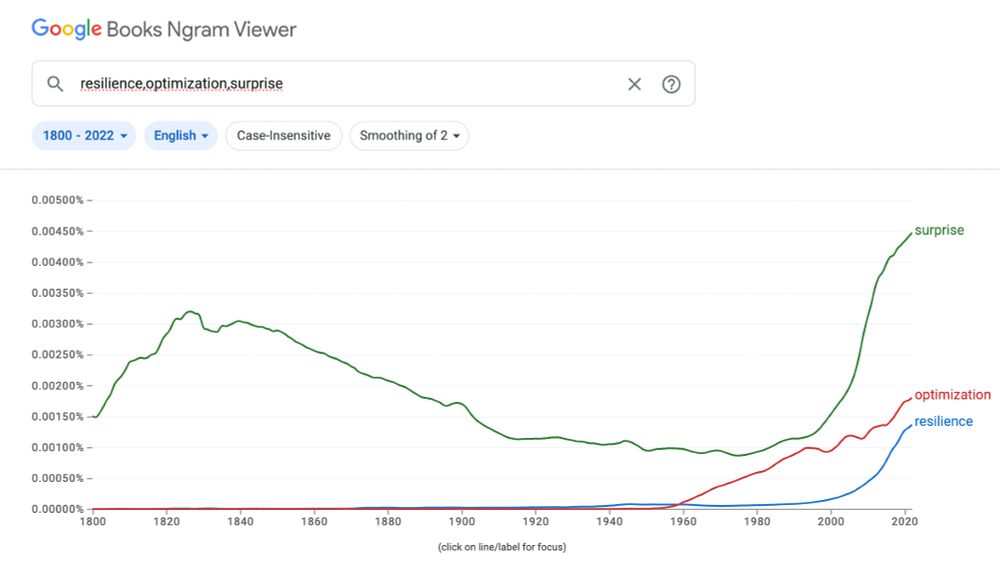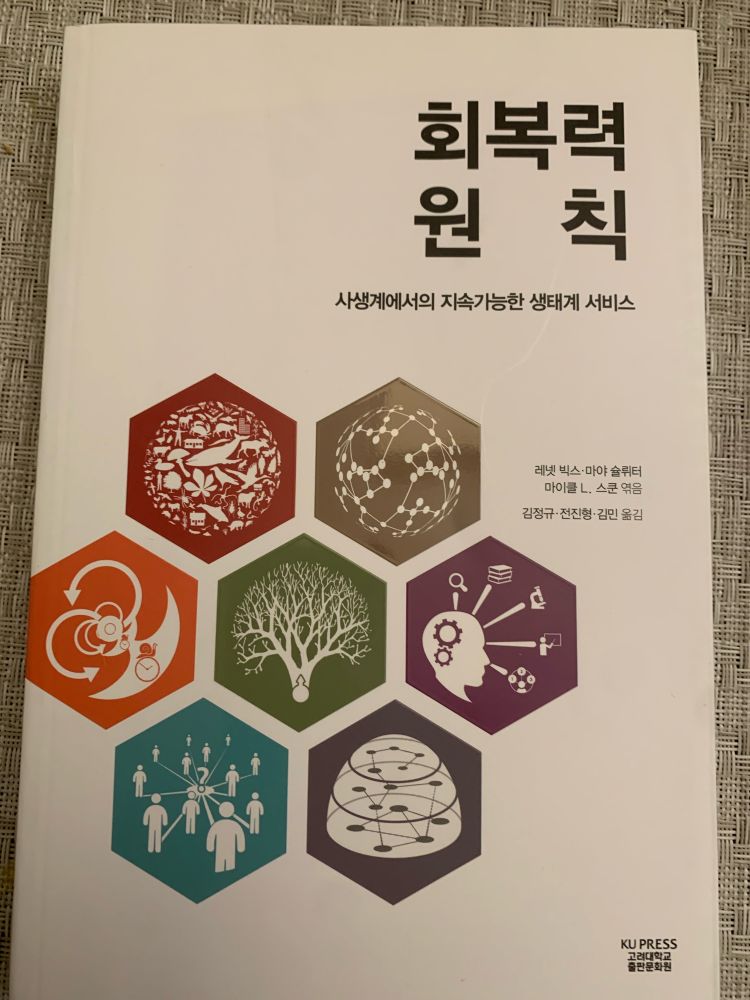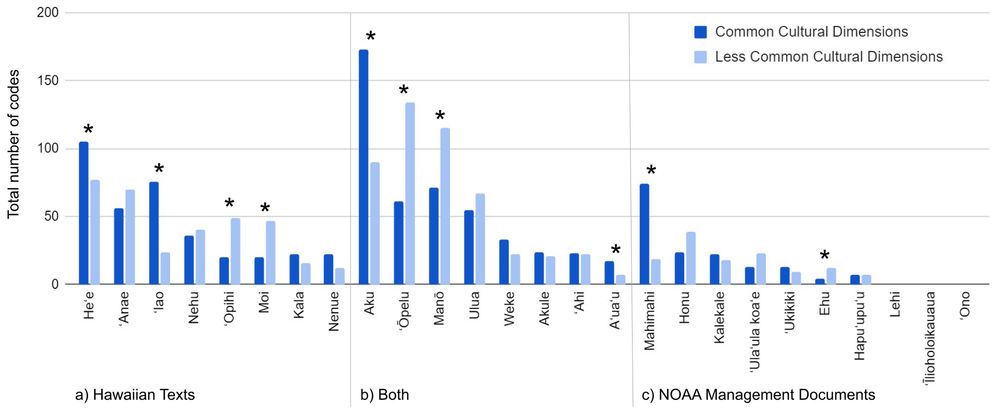
Save the date: the Society for Social-Ecological Systems is launching on March 27, 2025, at 3:30pm Central African Time. Register for the online launch event now.
Save the date! Celebrate the launch of SocSES with us – and learn more about our plans for building a home for SES research with you.
📅 Date: Thursday, 27 March 2025
⏰ Time: 15:30 – 17:00 Central African Time
📍 Location: Online (Zoom)
Register for the online launch event: lnkd.in/dDCR33DN
19.02.2025 21:24 — 👍 23 🔁 16 💬 0 📌 4

🚨 We're hiring! 🚨
We’re looking for two research assistants to join our team! If you're interested in contributing to research on making Swedish and global food systems more sustainable, resilient, and healthy, make sure to apply by 16 February! 🌱🍽️
Learn more: https://buff.ly/2Lu3mgn
11.02.2025 15:20 — 👍 13 🔁 16 💬 0 📌 1

Fig. 4: Conceptual figure illustrates the impacts of fire exclusion and suppression on area burned and fire severity in historically frequent-fire North American forests and woodlands represented by the majority of the fire scar sites used in our analysis.
current fire impacts amplified by
"the growing fire deficit that has removed the self-regulating behaviors and stabilizing feedbacks of historical fire regimes"
A fire deficit persists across diverse North American forests despite recent increases in area burned
Parks+
doi.org/10.1038/s414...
11.02.2025 23:59 — 👍 13 🔁 4 💬 0 📌 0

Hypothetical examples that illustrate how a regional SOS for resilience can be applied to a landscape to understand if cumulative effects are exceeding thresholds beyond which there may be significant changes to ecosystem structure, function, and process (i.e., ecological resilience). The regional SOS for resilience is shown with light shading outlined by an upper and lower boundary (hashed lines). The current position of the system within the regional SOS for resilience is represented by a dark red (outside regional SOS For resilience) or green (within the regional SOS for resilience) band. The width of the band captures the uncertainty or fluctuations in the precise state of the system. When an attribute has been pushed outside of the regional SOS for resilience, it is outlined in red. Top panel – a landscape where a century of anthropogenic wildfire suppression has resulted in highly connected landscapes that lack modularity and feedbacks (e.g., wildfire disturbance regimes). Although diversity and memory remain within their regional SOS for resilience, they are approaching the lower boundary. Middle panel – a landscape that has been fragmented by seismic exploration to support the oil and gas industry, thereby resulting in high modularity and decreased connectivity. Lower panel – a landscape with extensive timber harvest, which has pushed most attributes of a resilient ecosystem outside of their regional SOS. A patchwork of fragmented stands in various states of recovery has resulted in high patch diversity (e.g., age class), high modularity, and low connectivity. Additionally, silviculture practices have led to a decline in ecological memory and disrupted natural feedbacks (e.g., disturbance-recovery feedback). Figured produced in Biorender; imagery from Google Earth
Resilience & Environmental Assessment
Setting the Limit for Cumulative Effects: a Regional Safe Operating Space for Maintaining Ecological Resilience
Greaves+
doi.org/10.1007/s002...
&
Re-grounding cumulative effects assessments in ecological resilience
Greaves+
doi.org/10.1016/j.ei...
12.02.2025 12:15 — 👍 3 🔁 1 💬 0 📌 0
Important new paper on ecological function, broad-scale disturbances, and likely loss of ecological #resilience. Still thinking about what this means for resilience theory.
13.02.2025 10:11 — 👍 5 🔁 4 💬 0 📌 0

Reflexivity as a transformative capacity for sustainability science. ✨ Excited to share a recently published paper with a stellar group of transdisciplinary co-authors. Really proud of this one, as I was able to share an important personal learning during my PhD www.cambridge.org/core/journal...
14.02.2025 13:19 — 👍 2 🔁 1 💬 1 📌 0

google ngram viewer
The is thinking more about surprise, resilience, and optimization
#Anthropocene
21.12.2024 13:19 — 👍 0 🔁 0 💬 0 📌 0

Fig. 3. (a) Use of the terms “social-ecological systems,” “social ecological systems,” “socio-ecological systems,” and “socio ecological systems” over the years 1981–2019. The insert shows the period between 1981–2003. Source: Based on data extracted in the WoS database. (b) A cumulative stack graph showing the development of SES research across continents, covering the years 1981–2019. The number of publications for each region corresponds to the proportion it covers in the graph (by color).
The evolution of social-ecological systems (SES) research: a co-authorship and co-citation network analysis
Manyani et al
doi.org/10.5751/ES-1...
20.12.2024 10:04 — 👍 0 🔁 0 💬 0 📌 0
An interesting new take on the debate around top-down vs bottom-up formation of institutions.
18.12.2024 10:09 — 👍 7 🔁 3 💬 0 📌 0
Many people from the Resilience Alliance were involved in producing these new assessments. Congratulations on all your hard work.
The summaries for policy makers from these assessments are out now:
ipbes.canto.de/v/IPBES11Med...
20.12.2024 09:50 — 👍 0 🔁 0 💬 0 📌 0

The future of the biosphere
Explore studies, find resources and contribute your own study to the database.
Biosphere Futures 2.0
www.biospherefutures.net
is our online database of #socialEcologicalScenarios case studies
the database has >100 cases that have been contributed scenario practitioners from around the world
for more info see paper
doi.org/10.5751/ES-1...
we welcome more contributions
03.12.2024 13:22 — 👍 20 🔁 4 💬 0 📌 0
Note: A scientifically solid & practically useful literature on "tipping points" in local nature-society systems has been available since at least the early 1960s: Ricker (1963) "Big Effects from Small Causes" in fisheries management, Holling (1973) "Resilience & stability of ecological systems."
03.12.2024 17:12 — 👍 3 🔁 1 💬 0 📌 0

Building resilience now available in Korean!!
06.12.2024 02:29 — 👍 3 🔁 1 💬 0 📌 0

Fig. 2. Mean scores for indicators based on perceived resilience pre- and post-wildfire. Values are as follows: Very Poor (1), Somewhat Poor (2), Neutral (3), Somewhat Good (4), and Very Good (5).
Perceived changes in social-ecological resilience in fire-prone ecosystems in Colorado
Cheney et al
doi.org/10.5751/ES-1...
"wildfire events can have negative and positive effects on components of SES resilience"
04.12.2024 19:48 — 👍 0 🔁 0 💬 0 📌 1

Fig. 1. Comparison of number of codes reflecting common and less common cultural dimension codes identified in Ka ʻOihana Lawaiʻa for (a) taxa emphasized in Hawaiian texts, (b) taxa emphasized in both Hawaiian texts and NOAA management documents, and (c) taxa emphasized in NOAA management documents. Asterisk indicates a significant difference (chi-squared test, p < 0.05).
Relational research to elevate cultural dimensions of marine organisms in Hawaiʻi
Leong et al
doi.org/10.5751/ES-1...
04.12.2024 19:46 — 👍 0 🔁 0 💬 0 📌 0
SocSES advances the understanding of complex social-ecological systems dynamics, fosters collaboration among researchers and practitioners, supports the next generation of sustainability leaders, and leverages research for policy impact.
Professor passionate about student success & team science #firstgen #Brassica enthusiast walking Dogs of the Plant World
#Agriculture #Food #HigherEd #EduSky #Agsky #SciComm & more
#Soil #Crop #Science ; opinions mine
Scientist, mentor, posting on #ecology and #conservation, #environment, #climate change and #coral reefs. Australian-Irish. Fellow of the Australian Academy of Science.
https://scholar.google.com.au/citations?user=MhJ2LfsAAAAJ&hl=en
Intergovernmental Platform on #Biodiversity & Ecosystem Services. Denialism/trolling/profanity may result in banning. Re-skoots ≠ endorsements.
www.ipbes.net
linktr.ee/ipbes
I am an Associate Professor @brocku.ca studying small-scale fisheries and marine conservation. Posts are about ocean equity, blue justice, climate adaptation, and all things sustainability! #MarSocSci #OceanOptimism 🌿🐟
Ph.D. Candidate @McGillU
Social dimensions of social-ecological systems, Filipino, 29, single, 🏳️🌈
FinBio is hosted by Stockholm Resilience Centre at Stockholm University. Our mission is to support the financial sector’s capacity to contribute to a nature-positive economy, enhancing the resilience of our planet by reversing biodiversity loss.
Social scientist & Deputy Director at the Centre for Marine Science and Innovation @UNSW 🇦🇺.
Marine governance • Science-policy-practice • Knowledge Exchange • Human dimensions of marine conservation and management 🐟 🌊
#MarSocSci #OceanOptimism
Associate Professor of Aquatic Ecology at Texas Tech
Proud alum of Lake Superior State University
I like streams, lakes, food webs, and the people who appreciate them!
Subjected to entropy, daily. Keeper of dogs. Perfecting bacon.
Evolutionary ecologist, aquatic ecosystems, Canadian scientist at Eawag (Switzerland), limnologist, Greenland, stickleback, zooplankton.
https://www.blakematthewslab.com/
limnologist | Director - Flathead L Bio Station | Bierman Prof of Ecology - U Montana | Director - Sustainable P Alliance, ASU | Member - NAS | opinions mine
Professor, University of Wisconsin-Madison; Co-editor in Chief of Ecosystems; works on forest ecology, fire ecology, disturbance dynamics, working landscapes, ecosystem services, ecosystem modeling. Likes biking, hiking and classical music.
Ecosystem science, Global change, Assessments and Scenarios. Co-EiC of Ecosystems with @MonicaGTurner.bsky.social. My website:
https://limnology.wisc.edu/faculty/stephen-r-carpenter/
If you've found your way here, welcome aboard!
I follow everyone back, so you might notice I follow a lot of porn or fetish accounts. Just to be clear, I'm not affiliated with or endorsing any of them.
Ecologist | Head of a research think tank/science funder -> iDiv's Synthesis Centre sDiv idiv.de/sdiv | Global Alien Plants glonaf.org | SciCom | TEDx tiny.cc/aliens | Indierock drummer for http://wal.band - pls check | avid hiker & nature lover
News about the status of our changing climate and environment and the actions being taken to mitigate the risks of climate change. Main areas of focus are on climate politics, climate data, ecological research and renewable energy. 🇵🇸
MSc. Sustainable Development. Sustainability Consultant based in Mexico City. New here
Complexity. Systems. Climate. Sustainability. Philosophy. Open-water swimming to keep sane. Based in GQ (Gqeberha) South Africa.
I am a professor of tropical ecology at the University of York. I have a passion for Mountain ecosystems and cultures across the Global South, particularly in Kenya and Tanzania where I work with many Universities, NGOs and Government organisations.
I run a newsletter/podcast called Volts about clean energy & politics. Subscribe & join the community at http://volts.wtf!











